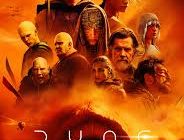The Article below was published in Vol. 136, Issue 3 of the Lake Forest College Stentor on November 13, 2020.
By Ivana Budjarovska ’24
Staff Writer
budjarovskai@mx.lakeforest.edu

For almost the whole world, the previous week was a number of consecutive November 3rds. Being the global superpower it is, the United States once again stirred emotions that ranged from anxiety to excitement, with the legendary 2020 presidential elections, “a million” miles away from polling places. Luckily for all impatient folks, The Associated Press called the race for Joe Biden and Kamala Harris, on Saturday of that week.
However, the Democrats’ lead by more than 4 million votes and Trump’s silly and delusional tweets are not the only things that made this presidential race legendary. Kamala Harris, a Black and Indian-American woman, is the first-ever woman and woman of color to serve as vice-president of the United States. Harris’s position will prove to many marginalized girls, women, and people of color that they are capable of great things.
While this . . . progressiveness is more than vital for the United States, it does not deny its colonial and racist history, as well as contemporary institutional racism which seems more frequent, or just more frequently documented, these days. For those reasons, I have compiled a list of four works by Black women that might help you understand how ingrained racism and anti-Blackness are in the United States and in predominantly white countries, while also making you shed a tear (of joy) or two.
1. Alice Walker’s “The Color Purple”
Published in 1982, Walker’s book is set in 20th century rural Georgia, and follows two Black sisters’ heartbreaking story filled with abuse, religion, songs, love, the loss of hope, and an unexpected reunion. A rather memorable quote from the book, which conveys its main message to always search for strength, patience, and love in everything, is:
“I think it p***es God off if you walk by the color purple in a field somewhere and don’t notice it.”
2. Audre Lorde’s Essay “Age, Race, Class, and Sex: Women Redefining Difference”
In this essay, Lorde intertwines her experiences as a Black woman, lesbian, and mother to call for action against racism and sexism. Since the essay explicitly challenges society’s heteronormativity and anti-Blackness, it is considered a powerful and revolutionary work. An example of such explicit challenging may be noted in the following excerpt from the essay, which compares the contrasting experiences of Black and white mothers:
“You fear your children will grow up to join the patriarchy and testify against you, we fear our children will be dragged from a car and shot down in the street, and you will turn your backs upon the reasons they are dying.”
3. Hafizah Geter’s “The Break-In”
“The Break-In” refers to the theory of intersectionality to describe the experience of a Nigerian immigrant in the United States in a funny and detailed manner, and through that – explores how it is very different from the one of a Black American. You may read or hear the author herself read the poem, at the following link: https://www.newyorker.com/magazine/2017/03/06/the-break-in
4. Gwendolyn Brooks’ “A Bronzeville Mother Loiters in Mississippi. Meanwhile, A Mississippi Mother Burns Bacon”
Lastly, Gwendolyn Brooks’ four-page-long poem discusses the tragic 1955 murder of the 14-year-old African American Emmett Till by focusing on the emotional progression of the white housewife whose husband killed Till. In this poem, the white woman gradually becomes disgusted with her husband’s blasphemous act and finally[becomes] overwhelmed with guilt and hatred by the end of the poem. The last five lines of the poem depict the woman’s “blossoming” hatred toward her husband:
“She did not scream.
She stood there.
But a hatred for him burst into glorious flower,
And its perfume enclasped them—big,
Bigger than all magnolias.”



